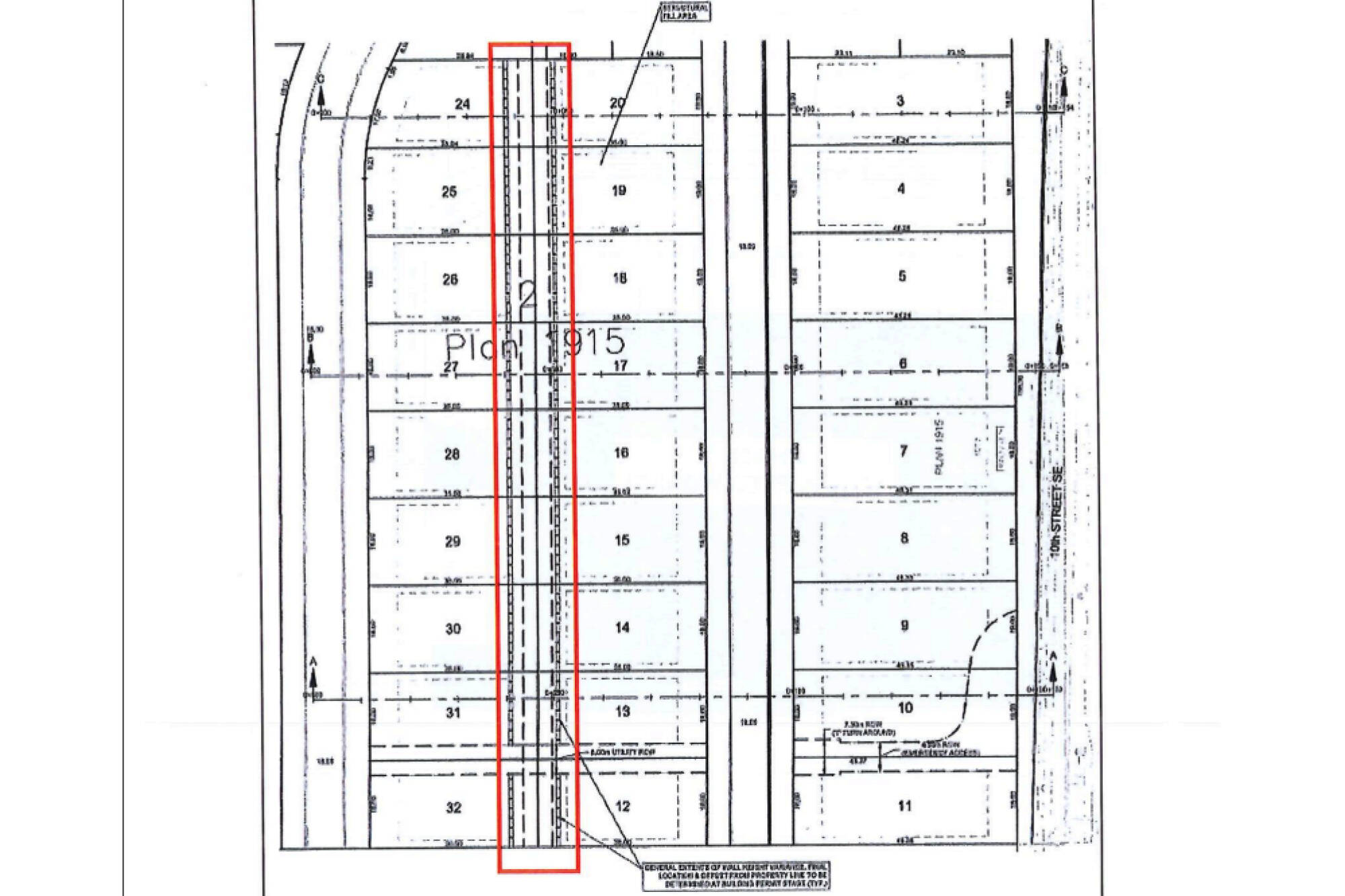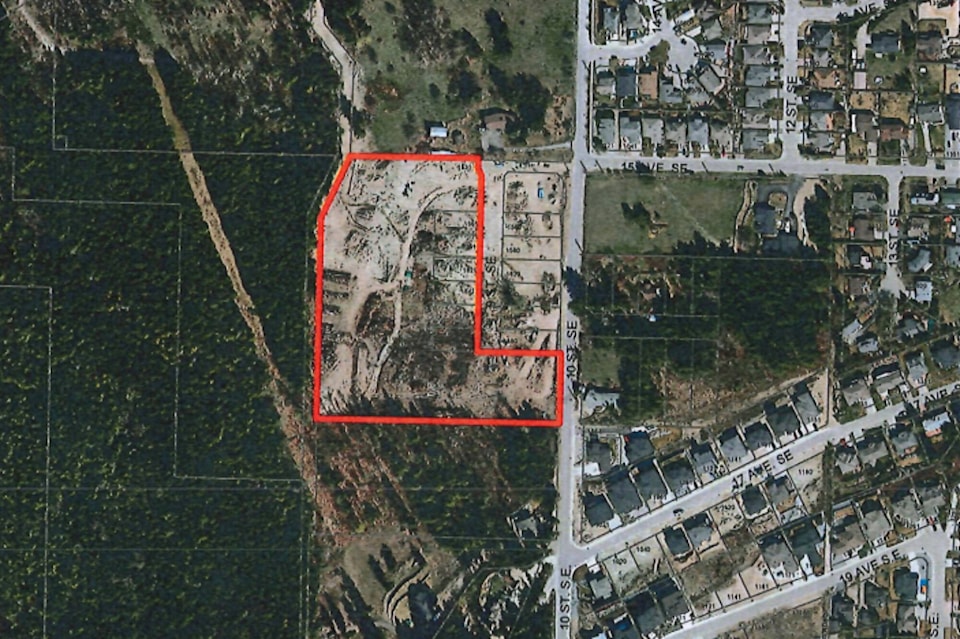Steep slopes and retaining walls were on the agenda for the city’s recent development and planning services meeting.
On the relatively lengthy seven-item list for the June 5 meeting was a development variance permit involving a future 41-lot subdivision at 1631 10th St. SE, on the eastern edge of the Hillcrest area, just west of 10th Street SE and the Byer’s View subdivision. The subdivision application proposes two future roads, 8th and 9th Avenues SE.
The proponents submitted a subdivision application for the 41 lots in January 2019.
The variances pertain to seven lots: 1631 10th St. SE, the large lot being subdivided, as well as six smaller lots, 1561, 1581, 1621, 1641, 1661 and 1681 9th St. SE.
Two variances were requested, one to increase the maximum permitted combined height of a fence in conjunction with a retaining wall from two metres (6.5 feet) to six metres (19.7 feet). The other was to extend the length of a cul de sac proposed from the permitted 160 metres to 249 metres for the future 8th Avenue SE.
Details of the proposal can be seen beginning on page 61 of the city’s June 5 development and planning services committee meeting.
City staff supported both the variances. Planner Chris Larson said the eastern wall is the larger of the two.
“Typically when considering retaining walls, staff aren’t necessarily supportive of larger retaining walls,” he explained. “However, in this case, factoring in the steep slopes, the largely undeveloped stage of the area, the siting of the walls off of the parcel lines (allowing for maintenance and potential landscaping), and the fact the applicant has taken a comprehensive approach to address this over multiple parcels,” staff is supportive, he said.
The lengthened cul de sac would allow the subdivision to proceed prior to the roads being completed.
G. Massier, agent for the owner, a numbered company, said the retaining walls won’t be one massive wall.
“It would sort of progress; as you go up 9th it gets steeper. The land goes the opposite way so you’re dealing with this and will get larger walls. It won’t be one long wall, which maybe came across that way. Our two long walls will be individual walls on each lot,” he explained to council.
Council unanimously agreed to forward the variance application to the next council meeting, but not without discussion.
Read more: Secondary suite rezoning may precede future subdivision in Salmon Arm
Read more: Council votes against neighbours, for density in Hillcrest
Coun. Kevin Flynn commended Massier on working with staff, but brought up the retaining walls. He said council will be looking at more steep-sloped developments in the future and wondered if steep-slope bylaws should be governing such issues or if they should be dealt with by individual variance requests.
“This one’s easy and it’s before people live there, but moving forward I want to make sure we don’t run into this, where Not In My Backyard trumps safety and geo-technical.”
Coun. Sylvia Lindgren referred to a subdivision she’d recently seen in Canmore where the lots were developed by the lot owners rather than one developer. She said the lots were small, the houses relatively close together with a public space included and many original trees left standing. A sidewalk ran between the backyards and there were no fences, with people walking and kids playing.
“Rather than have massive walls in backyards because we have hilly subdivisions or hilly landscapes, this would have been an excellent development idea for this property where the hilly parts were left natural with trees, which would have been beautiful, practical, would have fit with our eco-friendly development ideas, and instead we are faced with this particular application which is about putting in six-metre walls, which will provide no beautification, no shade, no place for kids to play, things like that,” she remarked.
She said she’d support the variances because the work is done, “but I don’t like it.”
“I hope that in our future developments, in our future considerations as council, and our future consideration of bylaws, that we think about these things ahead of time instead of afterwards so we don’t have these kind of variances come forward anymore.”
Mayor Alan Harrison expressed his appreciation for council’s comments, adding that the all-encompassing variance is advantageous because buyers are going to know what’s intended.
“When you look at this particular map you can see that given the planning to date, you’re going to need retaining walls. And so I appreciate Mr Massey bringing this forward as a variance across the whole subdivision piece. Buyers wouldn’t be dealing with them one at a time.
“As Coun. Flynn pointed out, once owner ‘A’ built their retaining wall, they didn’t really want owner ‘B’ building a high one beside them… By coming forward with a complete variance, people buying are going to know, owners are going to know, so that’s advantageous for everybody. For the developer, for council and for those owners.”
Read more: Three Shuswap students awarded scholarships up to $44,000
Read more: Density trumps neighbours during Salmon Arm rezoning hearing
martha.wickett@saobserver.net
Like us on Facebook and follow us on Twitter and subscribe to our daily newsletter.

